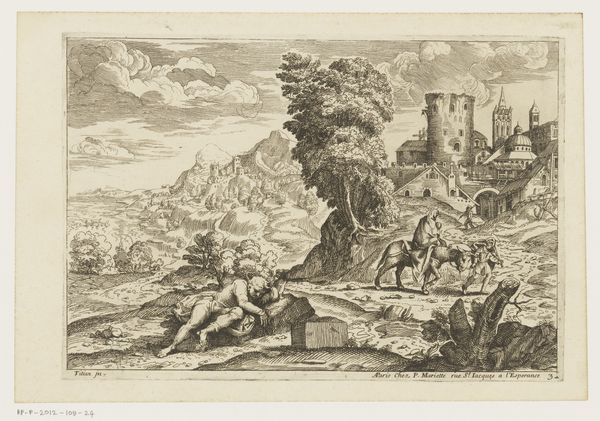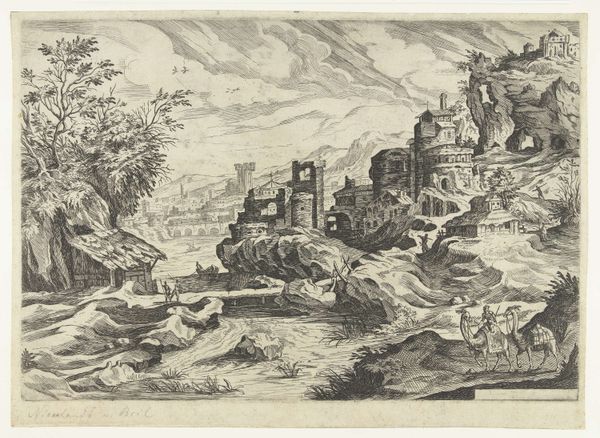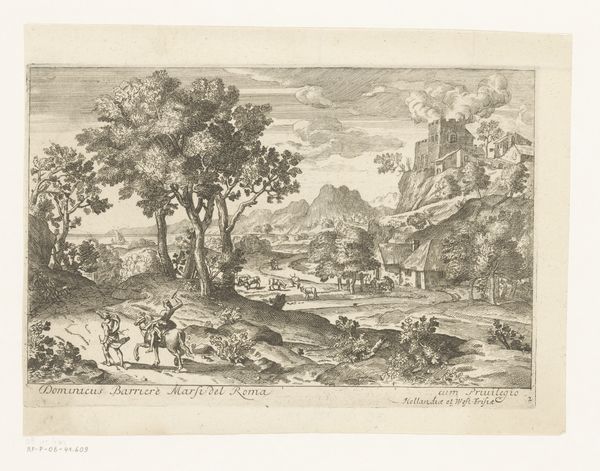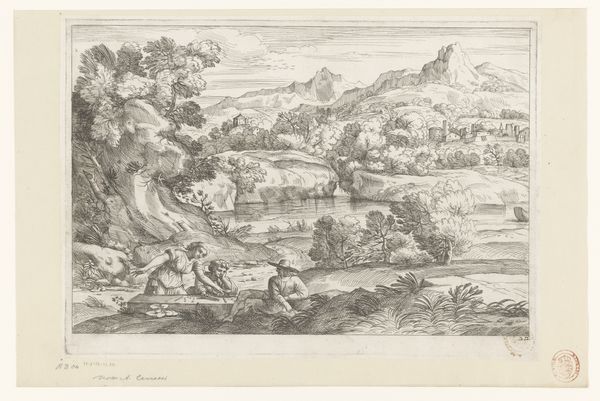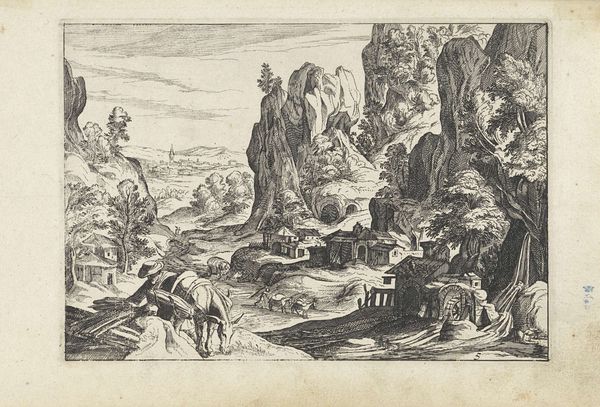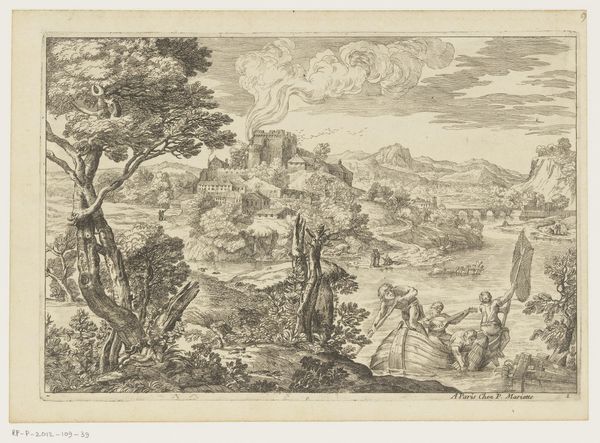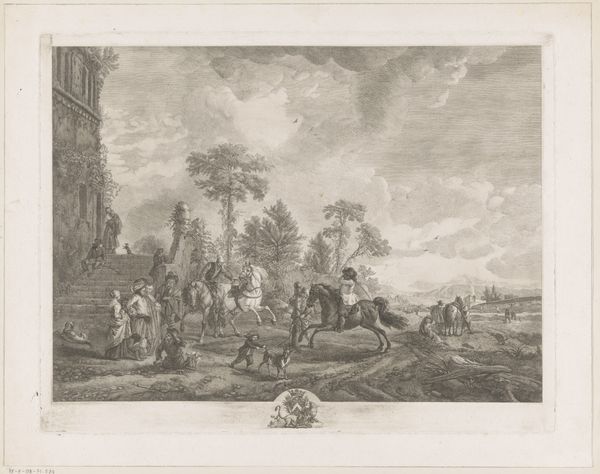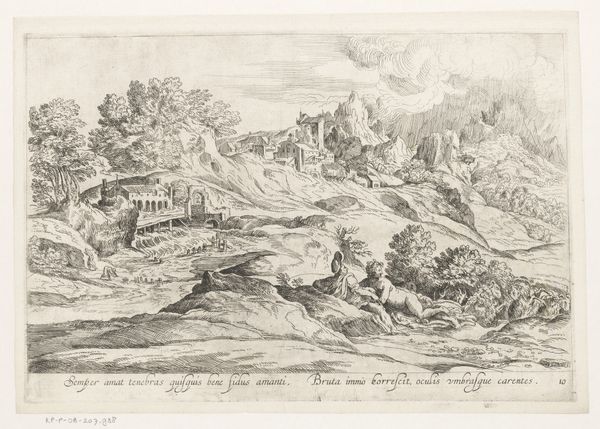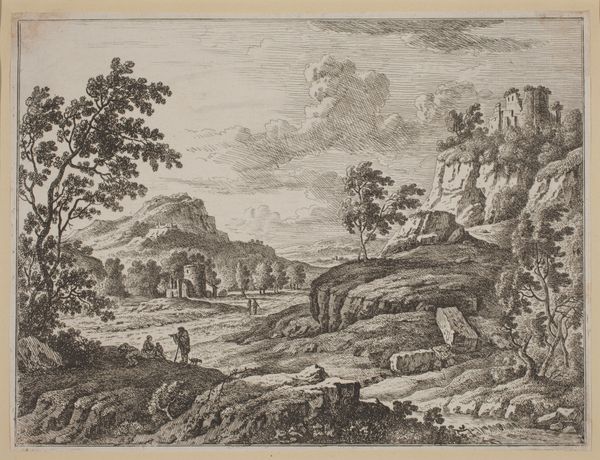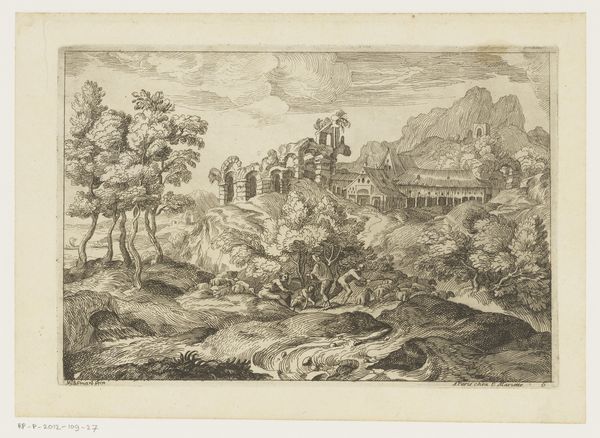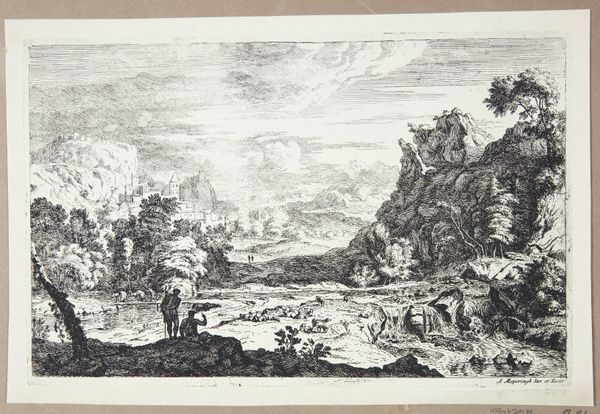
print, engraving
#
baroque
#
dutch-golden-age
# print
#
old engraving style
#
landscape
#
line
#
engraving
Dimensions: height 272 mm, width 382 mm
Copyright: Rijks Museum: Open Domain
Curator: Before us is "Rivierlandschap met ezels en schapen," a Dutch Golden Age engraving likely completed between 1648 and 1711, attributed to Etienne Baudet. It exemplifies the baroque style. Editor: It strikes me as both idyllic and somewhat melancholy. The muted tones enhance a sense of serenity, though there's a rawness to the etched lines that speaks to the labor behind it. The scale also surprises me—one doesn't often associate landscape engravings with this level of intricate detail. Curator: The socio-political backdrop is key. Prints like these democratized art in the Dutch Republic, circulating landscapes and narratives to a burgeoning middle class eager to display signs of their growing status. Editor: I see it in the way Baudet handled the materials. The very act of etching and printing allowed for the mass production of a view once only accessible to the wealthy who could commission landscape paintings. It challenges the hierarchy. Curator: Absolutely, and think about the distribution networks involved—prints traveled easily. This landscape, replicated countless times, subtly reinforced Dutch identity, a curated vision of an ideal countryside that viewers anywhere could take to heart. Editor: It's clever how the process informs content. Engraving allowed Baudet to play with line quality, mimicking the effects of light on the water, and on rough hewn rocks and structures throughout the composition. I bet the printmakers felt the pressures of production. Curator: Indeed. The institutional frameworks, like the guilds and the burgeoning art market, created economic pressures and competition. Did he labor himself or commission it? Understanding the roles of studios in crafting an image so evocative changes how we read it. It stops being solely the artist's vision. Editor: Yes. Recognizing the labor and means through which images like "Rivierlandschap" were consumed alters our impression. Knowing the process and context provides a grounded view into how landscapes, whether in paintings or prints, had specific cultural purposes. Curator: Indeed, from considering materiality to examining the social forces at play. It helps uncover the layers embedded within what might at first seem like a simple landscape. Editor: Exactly. These kinds of details move it from just being visually engaging and idyllic to making it resonate culturally with its time.
Comments
No comments
Be the first to comment and join the conversation on the ultimate creative platform.
